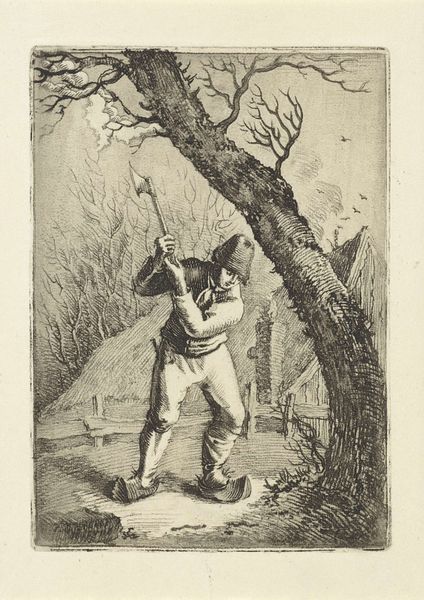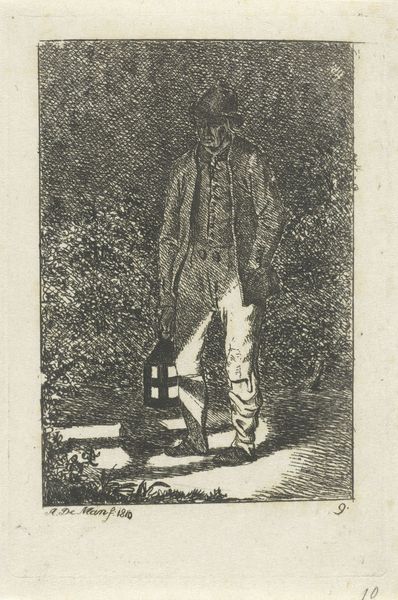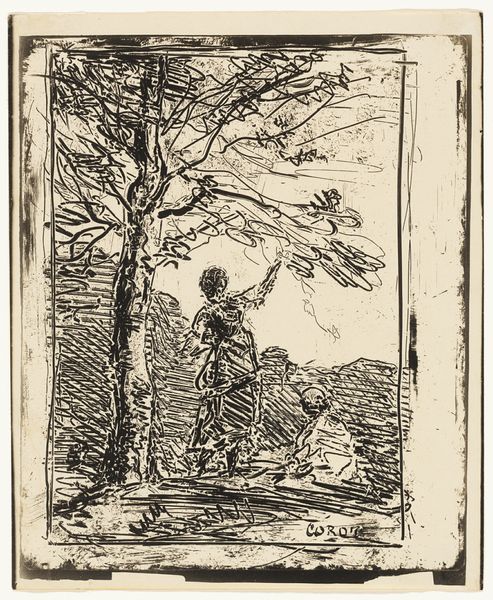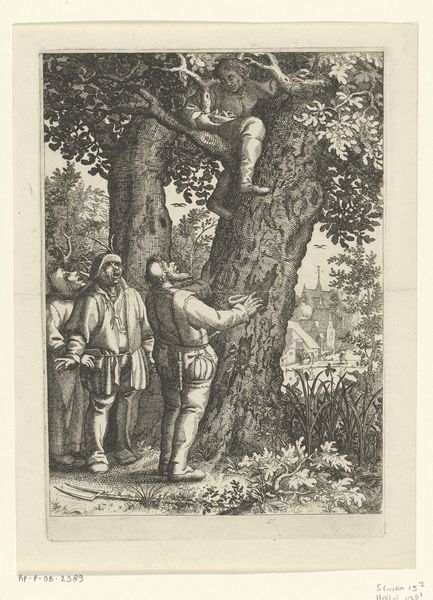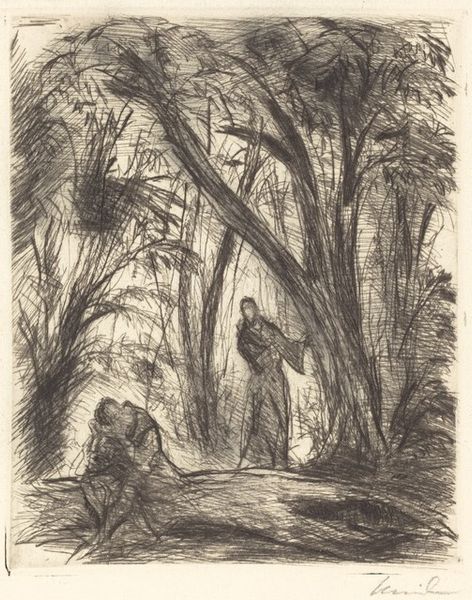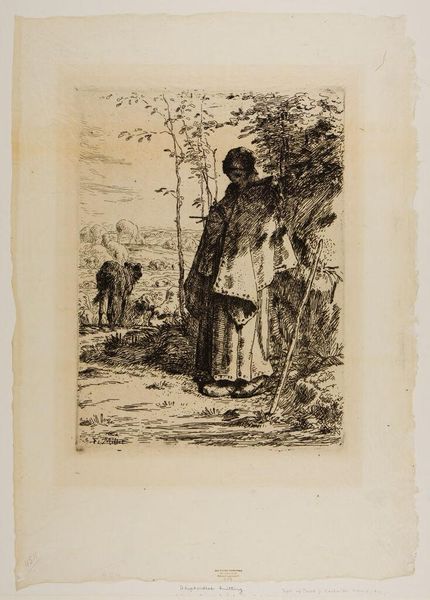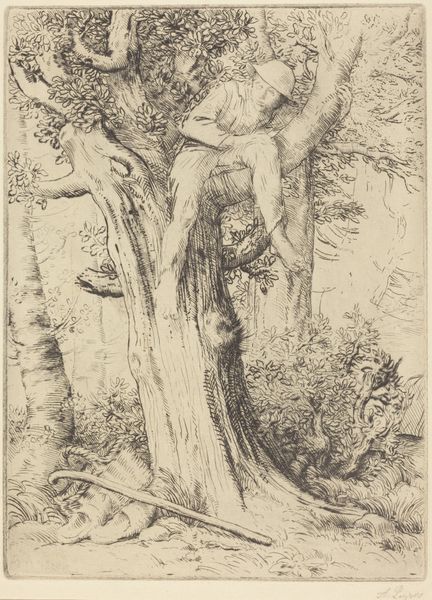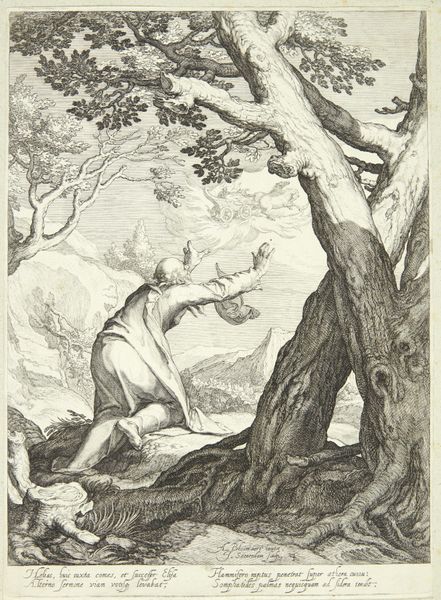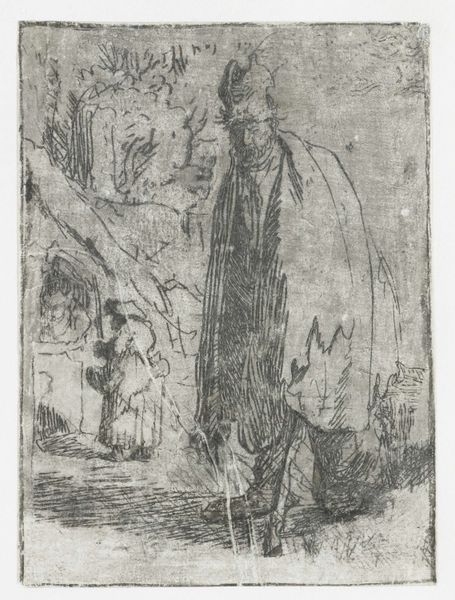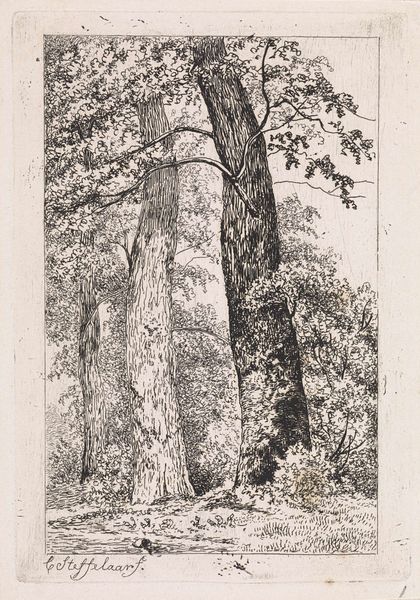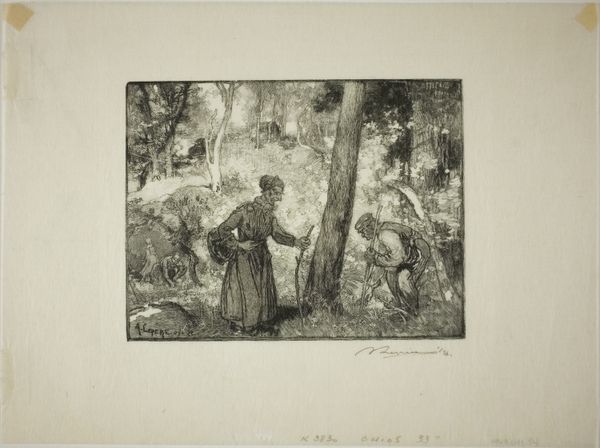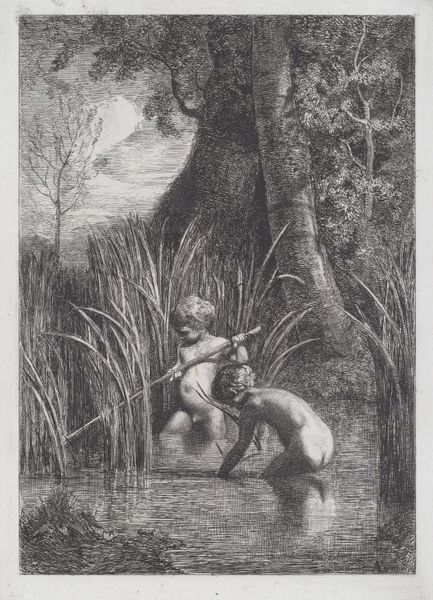
Copyright: Public Domain: Artvee
Editor: This etching, titled "Seymour," was created by James Abbott McNeill Whistler in 1859. The fine lines and detail really capture a dreamy atmosphere, almost as if this young man is lost in thought, transported to another time. How do you interpret this work? Curator: Well, on the surface it may appear to be a quaint scene, perhaps echoing Romantic ideals, but I see something more nuanced. Consider the context: mid-19th century, burgeoning industrialization. Whistler, though influenced by European art, was an American abroad. The figure, positioned against the organic form of the tree, his gaze directed upwards, seems to question his relationship with nature and society. Do you see him as simply admiring nature, or something more profound? Editor: That’s interesting. I hadn’t thought about the social context. It does seem more complicated than a simple nature scene. It is hard to understand the symbolism that may reflect society at the time. Curator: Exactly. Think about how gender and class play into this too. A young, presumably affluent man is juxtaposed against this ancient tree, a symbol of rootedness and natural power. There's a sense of disconnect. His gaze isn't meeting our own. Is he seeing a world denied to those in poverty, in urban spaces, for example? Are the artist’s choices framing this disconnect? Editor: So you’re saying Whistler might be subtly commenting on the social inequalities of the time through this seemingly innocent scene? I’d always viewed it as fairly straightforward and stylistic. Curator: Precisely. Art is rarely made in a vacuum. Even seemingly benign images reflect the social and political landscapes that birthed them. Considering these complexities opens up richer interpretations. Editor: I will never look at landscapes in the same way. Curator: It’s this dialogue between art and social critique that allows us a fuller appreciation. Editor: Definitely given me a lot to think about. Thanks!
Comments
No comments
Be the first to comment and join the conversation on the ultimate creative platform.

